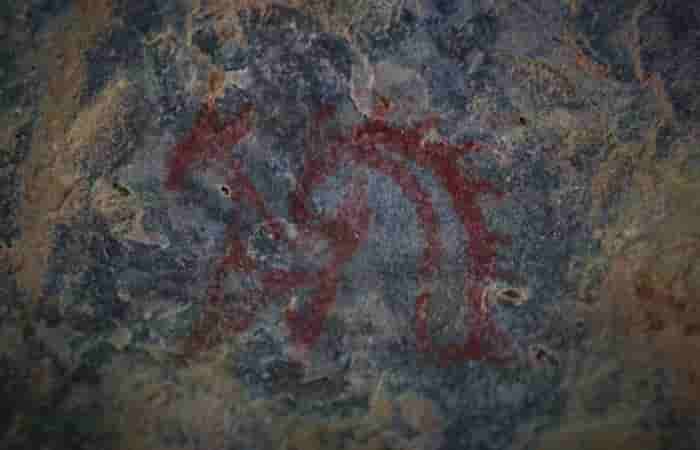Very close to the national capital, millennia-old cave paintings have been found, even though local residents say they always knew about it!
Yes, we are talking about the cave paintings that archaeologists have found in the Aravalli mountain range on the outskirts of Delhi in Haryana which is being guessed to be older than 20,000 years as reported in an article in smithsonianmag.com.
What is really interesting is that some of the sites can be traced to the period of Harappan or the Indus Valley civilisation which began around 2500 BC. Others are in fact much older, and go beyond the Harappan period also.
Talking about the historical findings, Banani Bhattacharya, the Deputy Director of the Haryana Department of Archaeology and Museums told the Times of India that even though the timing of the artworks has not been decided yet, they seem to belong to a period which is the late Stone Age. Besides the artworks, the archaeology team discovered rock art and ceremonial sites. While some of the discoveries were in the open, others we found on rock shelter ceilings.
Also read: Dholavira — an Indus Valley mega-city — joins 39 others in UNESCO's World Heritage list
Historians and archaeologists have by studying closely the long history of human settlement in the area, been able to understand the trajectory of tool-making development and how the art developed and emerged.
Apart from the change in tools and art, modification in materials for making these artworks too happened. This change in material over time is visible as most artworks were completed in ochre while there are others – the recent ones – made in white.
Explaining this to Sadia Akhtar of Hindustan Times, Bhattacharya said: “Stone Age paintings generally use red and ochre colours. Stones of these colours used to be available locally and inhabitants crushed the stones for preparing the colour for paintings.”
Also read: Mahabharata era caves discovered in Telangana’s Kawal Tiger Reserve
While these paintings may have caused a surprise among the historians and experts, for those living in the area and near the site, it has been a part and parcel of their life and that of their forefathers. As reported in The Times of India, locals claimed that they have known about these works for generations. In fact, many have walked past them innumerable times while others have grazed their cattle around this area.
It is the archaeology team which started looking at them this year in summer.
In a report in Indian Express, Sukhbir Siwach and Sakshi Dayal write that Sunil Harsana, a local environmental activist, who overtime has been recording different aspects of environment and vegetation in the area, had snapped images of these artworks. Through these pictures, Harsana drew the attention of archaeologists.
Elaborating on the caves, Harsana said: “The caves are in an area that is difficult to reach, so we have to plan before going. It is on a high cliff and the terrain is very difficult, it is the maximum difficulty level in terms of climbing. This is probably why the caves and the art survived as well, because people don’t normally go there.”
Also read: Did the Pearl Harbour incident trigger the end of a Japanese logging camp in Canada?
Interestingly, these paintings and the places they were found have features which are common with the Bhimbetka rock shelters. The latter are located in Madhya Pradesh, and lie southeast of the new archaeological site.
The authorities are planning to give the site a protected status. The Haryana Principal Secretary Ashok Khemka informed the Indian Express that the government is thinking about bestowing protected status on the Mangar Bani forests, the area where the new discovery has been made.




















